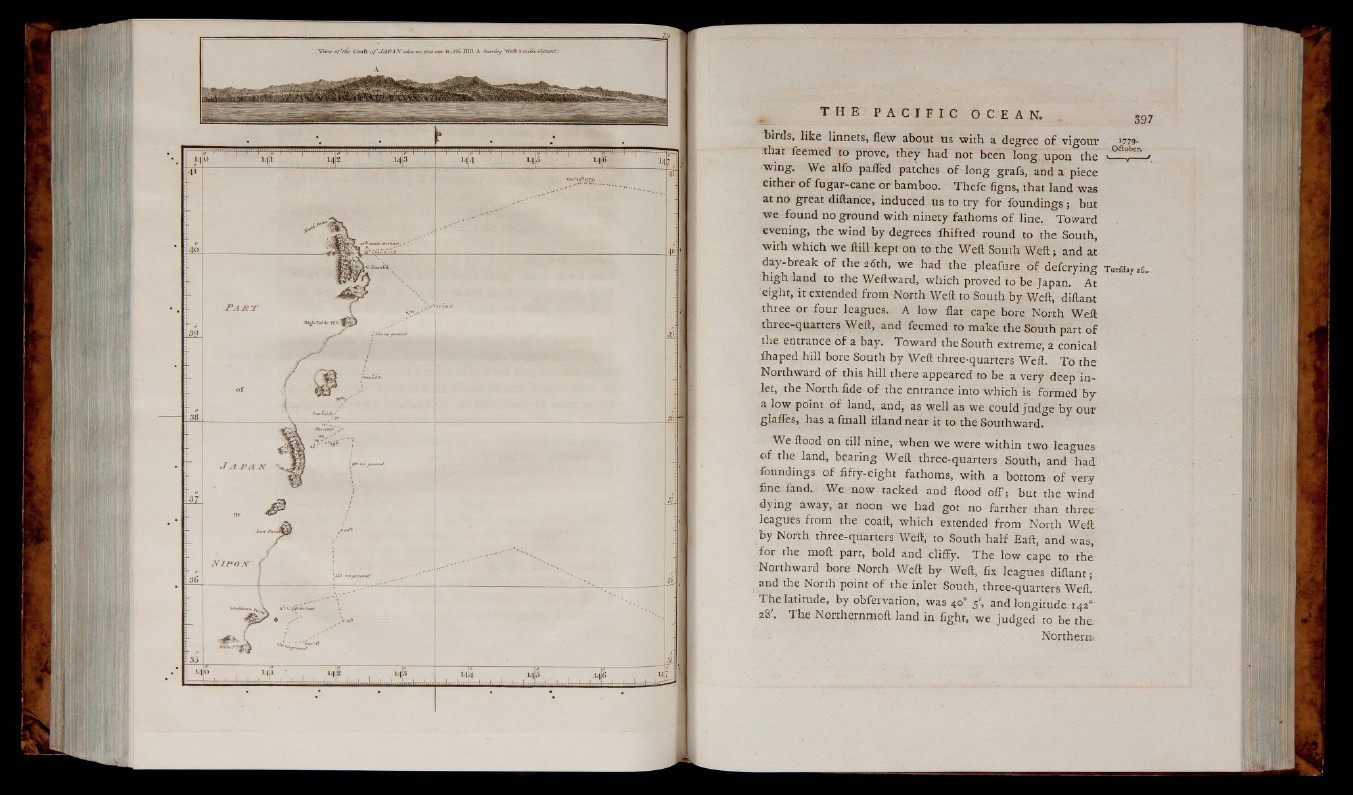
birds, like linnets, flew about us with a degree o f v ig ou r ^779*
that feemed to prove, they had not been long, upon the ■ ° a°ber" ■
wing. We alfo paffed patches o f long grafs, and a piece
either o f fugar-cane or bamboo. Thefe figns, that land was
at no great diftance, induced us to try for foundings ; but
w e found no ground with ninety fathoms o f line. Toward
evening, the wind by degrees Ihifted round to the South,
with which we ftill kept on to the Weft South W e ft; and at
day-break o f the 36th, we had the pleafure o f defcrying Tuef<hy *6.
h igh land to the Weftward, which proved to be Japan. At
eight, it extended from North Weft to South by Weft, diftant
three or four leagues. A low flat cape bore. North Weft
three-quarters Weft, and feemed to make the South part, o f
the entrance o f a bay. Toward the South extreme; a conical
fhaped hill bore South by Weft three-quarters Weft. To the-
Northward o f this hill there appeared to be a very deep inlet,
the North fide o f the entrance into which is formed by-
a low point o f land, and, as well as we could Judge by our
glaffes, has a fmall illand near it to the Southward.
We flood on till nine, when we were within two leagues
o f the land, bearing Weft three-quarters South, and had
foundings o f fifty-eight fathoms, with a bottom o f very
fine fand. We now tacked and flood off> but the wind
d y in g away, at noon we had got no farther than three
leagues from the coaft, which extended from North Weft,
by North three-quarters Weft, to South h a lf Eaft, and was,
fo r the moft part, bold and cliffy. T he low cape to the
Northward bore North Weft by Weft, fix leagues diftant;
and the North point o f the inlet South, three-quarters Weft.
T h e latitude, by obfervatibn, was 40° 5', and longitude 142“"
28-'. The Northernmoft land in fight, we judged to be the:
Northern.